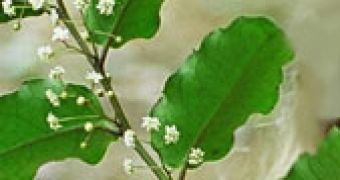Most of Earth's history, 97 percent of it, plants did not have flowers or fruits. Scientists have now found the missing link between gymnosperms (the primitive plants without flowers) and angiosperms (the flowering plants), and also the fact that the missing link is actually a "living fossil" - a plant that has managed to survive to this day.
The plant is called Amborella, and it is found in the rain forests of New Caledonia in the South Pacific. It is a small bush with tiny greenish-yellow flowers, and red fruits that grow only in the understory of the rain forests. Amborella plants are unisexual, meaning they will produce either all male or all female flowers. Cross-pollination between plants is required for fruit production.
The plant has a unique way of forming eggs that may represent a critical link between the remarkably diverse flowering plants and their yet-to-be-identified extinct ancestors, said Professor William "Ned" Friedman from the Department of Ecology and Evolutionary Biology at the University of Colorado at Boulder. Angiosperms are thought to have diverged from gymnosperms - the dominant land plants, when dinosaurs reigned in the Cretaceous and Jurassic periods - roughly 130 million years ago, and have become the dominant plants on Earth today.
The origin and evolution of flowering plants has long confounded scientists. Nearly 130 years ago, Charles Darwin, called the appearance of flowering plants "an abominable mystery." The surprising new finding suggests flowering plants may have arisen on Earth during a time when plant evolution was "particularly flexible," Friedman said.
"One of the biggest challenges for evolutionary biologists is understanding how these flowering plants arose on Earth," said Friedman. "The study shows that the structure that houses the egg in Amborella is different from every other flowering plant known, and may be the potential missing link between flowering plants and their progenitors."
In basic terms, Amborella has one extra sterile cell that accompanies the egg cell in the female part of its reproductive apparatus known as the embryo sac. "The unique four-celled egg apparatus in Amborella could represent a critical link between angiosperms and gymnosperms," he wrote in Nature. "We associate this structure with a relatively primitive reproductive process," he explained.
The discovery of the unique configuration of the egg apparatus, which is thought to be a relic of intense evolutionary activity in early angiosperm history, "is akin to finding a fossil amphibian with an extra leg," according to a perspective piece accompanying Friedman's article.
Photo: The Amborella plant. (credit: Tom Lemieux)

 14 DAY TRIAL //
14 DAY TRIAL //